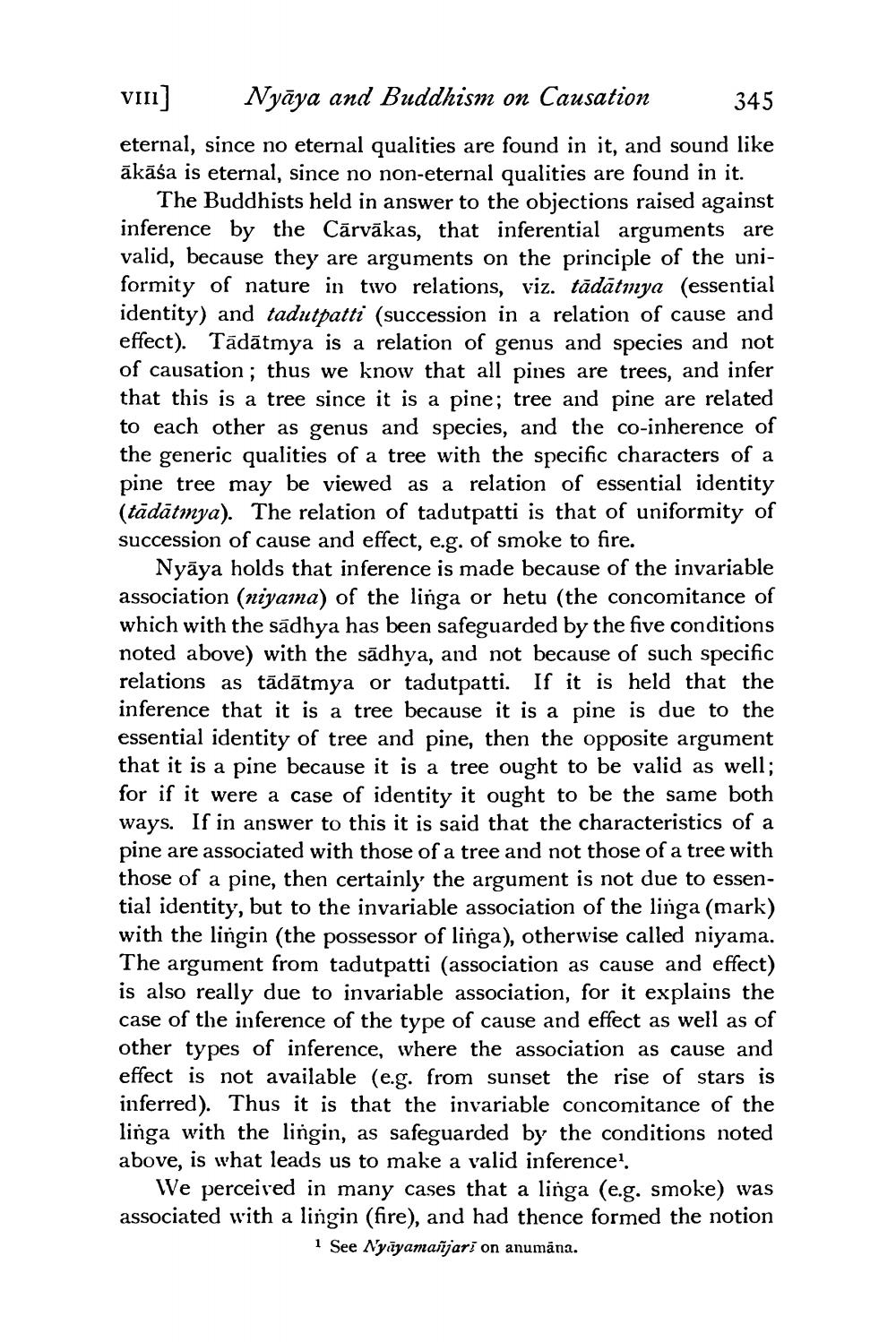________________
vini
Nyāya and Buddhism on Causation
345
eternal, since no eternal qualities are found in it, and sound like ākāśa is eternal, since no non-eternal qualities are found in it.
The Buddhists held in answer to the objections raised against inference by the Cārvākas, that inferential arguments are valid, because they are arguments on the principle of the uniformity of nature in two relations, viz. tādātmya (essential identity) and tadutpatti (succession in a relation of cause and effect). Tādātmya is a relation of genus and species and not of causation; thus we know that all pines are trees, and infer that this is a tree since it is a pine; tree and pine are related to each other as genus and species, and the co-inherence of the generic qualities of a tree with the specific characters of a pine tree may be viewed as a relation of essential identity (tādātmya). The relation of tadutpatti is that of uniformity of succession of cause and effect, e.g. of smoke to fire.
Nyāya holds that inference is made because of the invariable association (niyama) of the linga or hetu (the concomitance of which with the sādhya has been safeguarded by the five conditions noted above) with the sādhya, and not because of such specific relations as tādātmya or tadutpatti. If it is held that the inference that it is a tree because it is a pine is due to the essential identity of tree and pine, then the opposite argument that it is a pine because it is a tree ought to be valid as well; for if it were a case of identity it ought to be the same both ways. If in answer to this it is said that the characteristics of a pine are associated with those of a tree and not those of a tree with those of a pine, then certainly the argument is not due to essential identity, but to the invariable association of the linga (mark) with the lingin (the possessor of linga), otherwise called niyama. The argument from tadutpatti (association as cause and effect) is also really due to invariable association, for it explains the case of the inference of the type of cause and effect as well as of other types of inference, where the association as cause and effect is not available (e.g. from sunset the rise of stars is inferred). Thus it is that the invariable concomitance of the linga with the lingin, as safeguarded by the conditions noted above, is what leads us to make a valid inference?
We perceived in many cases that a linga (e.g. smoke) was associated with a lingin (fire), and had thence formed the notion
1 See Nyāyamañjari on anumana.




